Attractions
Search for interesting attractions by type and / or area or by keyword, end by pressing "Show results"
44 Search results, page 1/3
Clear filters-
Kuntsi Museum of Modern Art
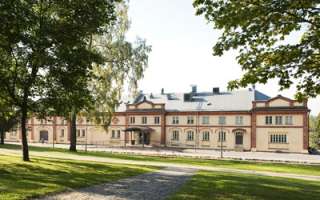
From Vaasa market square, it is only a short walk to the Kuntsi Museum of Modern Art, which is in a beautiful spot by the sea in the Inner Harbour. The museum was named after art collector Consul Simo Kuntsi (1913–1984), and the art collection of the foundation established by him is considered one of the most important collections of modern and contemporary art in Finland. Donations and deposits, such as Lars Swanljung’s (b. 1944) collection of contemporary art, consolidate the importance of Vaasa in the art world.
The exhibition activities of the museum are based on changing exhibitions of modern and contemporary art as well as on displays of the museum’s own art collections. The exhibitions at the Kuntsi museum are in-depth analyses of phenomena in contemporary art and topical issues providing substance for identity building and understanding the phenomena of our time.
The facilities at Kuntsi offer excellent scope for organizing various events. Cross-disciplinary art performances and events, in particular, in collaboration with the third sector and special groups of the public, are frequently organised.
+358 40 183 0440
kuntsi.info@vaasa.fi
-
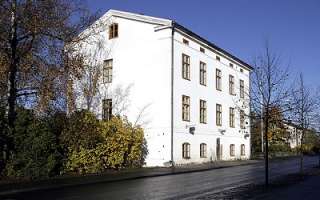
The Museum of Old Vaasa is located in the Wasastjerna House, in the city quarter known as Old Vaasa. You can learn about the history of Vaasa before the fire of 1852, which destroyed most of the city as it was then.
The museum’s ticket sales desk offers a small selection of cards, historically-themed museum shop items and books. The vaulted storage room on the ground floor functions as a café, Falander’s Cellar, which during the summer serves coffee, tea and soft drinks.
+358 40 482 9816
museoinfo@vaasa.fi
-
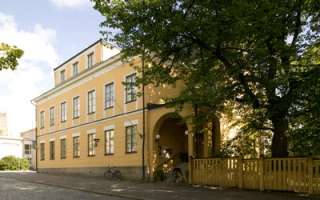
The Tikanoja Art Museum is located in the centre of Vaasa. The museum organizes exhibitions of older Finnish and international art, thematic cultural-historical exhibitions as well as changing displays of its own collections.
A pedagogical touch and museum pedagogical activities related to exhibitions play an important role at the Tikanoja Art Museum. The Tikanoja Art Museum is a vivid museum that also offers cross-disciplinary art performances.
The Tikanoja Art Museum came into being as a result of the love of art of a local businessman, Commercial Counsellor Frithjof Tikanoja (1877-1964). The Tikanoja collection includes an exceptionally remarkable section of foreign art in Finland with an emphasis on French paintings from the 19th and early 20th centuries.
+358 40 182 8702
museoinfo@vaasa.fi
-
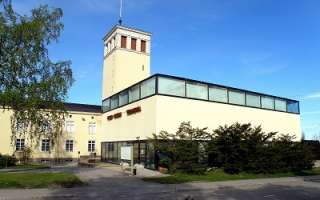
The museum is located in Marianpuisto Park, which is under a 15-minute walk from Vaasa Market Square. The museum was established in 1895 and it functions as the historical museum of the City of Vaasa and as a museum of natural science for Ostrobothnia. The museum focuses mainly on cultural history, art and natural science.
Between three and five changing exhibitions are held annually. In addition to the temporary exhibitions, there are three permanent collection exhibitions corresponding to the museum’s main areas of focus. The Hedman Floor houses antiques and works of art, Vaasa 400 – which is a city history exhibition – and the Terranova exhibition, which informs the visitor about the natural environment in the Kvarken region and the World Heritage Site. The museum offers enjoyable experiences for visitors of all ages as well as information and ideas for teaching cultural history, local history, natural science and art.
The museum’s main collaborators are Ostrobothnia’s Historical Museum Association, the Hedman Foundation, the Vaasa Art Association, the Ostrobothnia Australis Association and the Gröndahl Brothers’ Foundation.
+358 40 865 1933
museoinfo@vaasa.fi
-
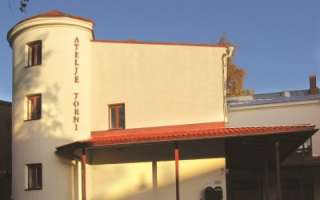
ART CENTER TORNI is the home and cradle of artists of Vaasa Art Club. From its protection have many respected artists left.
+358 40 852 5111
torniart@gmail.com
-
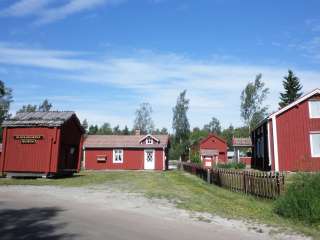
The sexton farm (Klockargården) was built in 1856 by the village farmers as residence for the parish sexton Johan Erik Munch.
The residence was donated to Bergö Antiquarian Society on august 7th 1942. The residence has since then been a local museum and is operated by Bergö Antiquarian Society.+358 400 165 685
pererik.berglund@netikka.fi
-
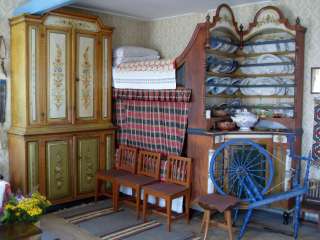
Mårtes was built in 1844 and today houses a museum. When visiting Mårtes, you will be able to see some of the oldest Björkö-cupboards decorated with ornate floral motifs, the first village radio, and old textiles, but also more modern items that represent how this home has changed with time.
The museum area also contains the Motor Museum, the Soldier’s Cabin, and the Carding and Spinning Mill, as well as our exhibitions about the Defence Corps, the School in Björkö, and 19th century clothing. People have already visited this house for decades, as its previous owner Emil Doktar was a famous bonesetter and adventurous jack-of-all-trades. To hear more about him, his family and Björkö life in general, do pay us a visit!
The museum is open during the summer season.
+358 44 324 5730
martesgardsmuseum@gmail.com
-
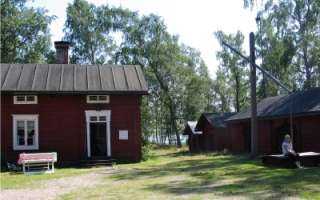
Brage Open Air Museum with its beautiful surroundings lies within walking distance of the centre of Vaasa.
The Museum consists of a complete nineteenth-century farm with interesting buildings and interiors from the Swedish-speaking part of Ostrobotnia. Permanent exhibitions include the decorated Wedding Room, the Girls clothing Loft with colourful textiles and the Seel Hunting Museum. There is a model of a stone labyrinth on the area.
+358 44 012 7166
info@vasabrage.fi
-
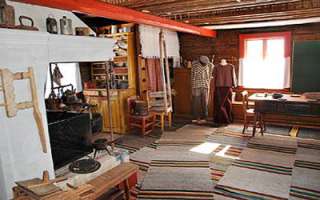
The Orregården farm house in the village Malax (1879) and its restored garden (as it was in the 1930s) form a unique milieu with all the farm’s objects preserved in their original surroundings. The other 20 buildings are moved to the open-air museum.
mmf.brinken@gmail.com
-
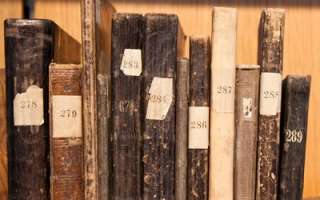
Finland’s first library was established in Vaasa already in 1794. The Library Museum provides a versatile picture of the history of the library with the help of artefacts, books and pictures. Historical book collections share the space with the museum’s alternating exhibitions.
The roots of Finland’s first library are in the Waasa Reading Library (Waasan Lukukirjasto), which was established by some members of the Vaasa court of appeal in 1794 for “their own amusement and to pass the time”. Other citizens were also allowed to use the library for a small fee. The library had a wide collection of books and maps as well as portraits and copper drawings. It is not likely, that the art items were lent, but the beginning of an art rental shop of a sorts was, however, there. The Reading Library operated until 1845, when the censorship regulations of the Russian rule forced it to close its doors. There are 30 works in the museum today, which remain from the original Reading Library.
After the Reading Library closed down the citizens of Vaasa were left without a library for five years. Lecturer Oskar Rancken stepped up, and the new library operated until the beginning of the 20th century. In the attic of the Palosaari library was discovered in the 1930s a collection of preserved tomes from the library in question. The tomes were bound in black leather backs, and therefore the collection has received the nickname “The Black Library”.
http://www.museiportalosterbotten.fi/museum-a-o-en/museum/60-finland-s-library-museum
-
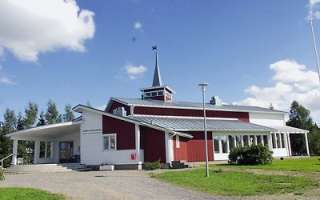
Step inside the Youth Association Museum. In the Youth Association Museum the visitor can get acquainted with the exciting and eventful history of our organization spanning 135 years. How did we become us? We have gathered a basic collection around thematic entities, that each recount our history.
http://www.museiportalosterbotten.fi/museum-a-o-en/museum/73-finland-s-youth-association-museum
-
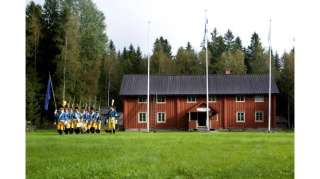
Fänrik Stål’s center includes the area at the historic site of the Battle of Oravais. Here, the war of 1808-1809 is highlighted through both objects, stories, the place and the buildings. The regiment’s exercises and displays bring history to life in period uniforms and weapons.
+358 50 343 2642
Kenny.sundqvist@adelbragd.fi
-
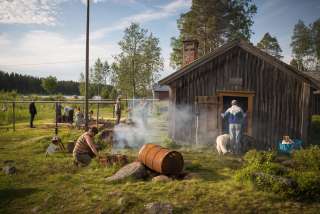
The Granösund Fiskeläge (Fishing Village Museum) provides a view of life in the coastal region of Ostrobothnia, in the days when the majority of the population still depended upon fishing, seal hunting, farming and handicraft for its livelyhood.
+358 44 726 5165
replot.hembygdsforening@korsholmsskargard.fi
-
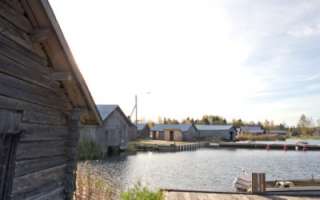
Harrström old fishing harbour, a Place full of life back in the days. Close to the harbour, there is a small museum about how fisherman’s families lived in the turn of the century 1800-1900 and the harbour offers a beautiful view to admire.
-
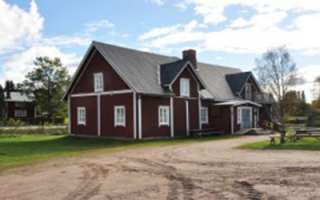
Hägglund’s Photography Museum was inaugurated in 2000, and it is founded upon photographer Erik Hägglund’s studio. The wide collection of cameras and the studio’s equipment illustrate the history of photography from the 1910s to the present day.
Erik Hägglund from Rökiö was interested in art already at an early age, and he travelled to Sweden to work as the apprentice of a painter. There he was employed in a studio and his interest in photography was aroused. When he returned to his home region, he established a modest studio in a stave shed in 1910. He constructed his first atelier camera himself and also painted the shooting background himself. Those are both displayed in the replica of the workshop built inside the museum.
kvarnstuga@outlook.com
http://www.museiportalosterbotten.fi/museum-a-o-en/museum/13-hagglund-s-photography-museum
-
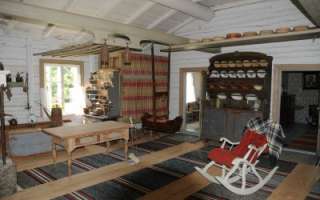
In the Isokyrö Museum can be seen peasant artefacts from the latter half of the 19th century. Everyday utensils are displayed as if the people of the house had just gone to their work outside and left the house for the day. The visitor rather steps into a genuine 19th century milieu than an exhibition.
The museum is characterized by two traditional 1½-storey Ostrobothnian houses. They are grouped with the outbuildings in a way typical for a traditional courtyard. The main building, the Piuhola house, dates back to 1768 and has been moved to the area from the Kuivila village. The buildings represent the building traditions of the 18th and 19th century. The artefacts in the museum also originate from that period.
http://www.museiportalosterbotten.fi/museum-a-o-en/museum/69-isokyro-museum-and-carolinian-centre
-
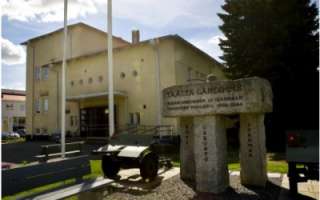
In the Isokyrö War Museum are displayed objects and stories from all the wars waged by Finland. The specialty of the museum is the cannon park, where there are nine different kinds of cannons on view.
In the War Museum one can with the help of items and guidance get acquainted with the Gudgel War (a peasant uprising in the kingdom of Sweden in the part that is now Finland), the Hakkapeliittas (Finnish light cavalryman), the Carolinians, the Finnish War in 1808-1809, the First World War, the Civil War in 1918, and the Second World War in 1939-1945. In the vitrines are exposed soldiers’ uniforms and helmets, rifles and other equipment. One can see in the museum men’s attires from the period of the Gudgel War, a file soldier with his wife, an ensign’s uniform from the year 1918, a festive uniform of a lieutenant colonel and the uniform belonging to a member of the Lotta Svärd organization during the Second World War.
One of the museum’s pearls is a park with nine different kinds of modern era cannons. Here you can see for example an infantry cannon dating back to 1936, a field cannon dating back to 1938 and other cannons from Russia, Finland, Switzerland and Sweden. A Russian horse-drawn field cannon from the year 1902 is one of the oldest weapons in the park. The cannons are no longer in working order, as they have been defused.
http://www.museiportalosterbotten.fi/museum-a-o-en/museum/70-isokyro-war-museum
-
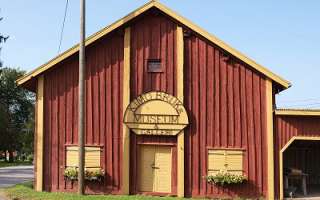
The Kimo Ironworks is the only ironworks museum in Ostrobothnia. The three hundred years old art of forgery is being taught here by one generation to the next with the help of courses and all-day presentations. In the beautiful leafy landscape of dams, rapids and bridges one can explore epochs in history among the 18th century buildings, such as an ironworks estate, a steeple and the ruins of a tilt smithy.
The museum is located in an iron magazine dating back to 1763. On display there are scale models of the 18th century Kimo ironworks and hammer smithy, atmospheric pictures depicting work on the ironworks, and diverse items and tools associated with processing of iron, such as a smith’s diploma from the Bergskollegiet school in Stockholm, and tomb crosses forged by smiths, including also their own ones.
+358 40 045 5080
info@kimobruk.fi
-
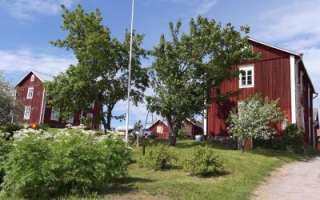
The idyllic courtyard milieu of the Klemets Houses is in many ways unique. No other group of houses built in a similar way has survived in the county. Here can as well be found a versatile selection of exhibitions, such as a textile exhibition, a harmonium museum, a motorcycle exhibition and everyday items associated with peasant life. The atmosphere of the early 20th century can also be sensed in the café, which has been elegantly furnished with 1940s functionalism style furniture.
The idyllic courtyard milieu of the Klemets Houses is unique in a number of ways. No other group of houses built in a similar way has survived in the country. Here can as well be found a versatile selection of exhibitions, such as a textile exhibition, a harmonium museum, a Sunday school museum and everyday items associated with peasant life. The atmosphere of the early 20th century can also be sensed in the café, which has been elegantly furnished with 1940s functionalism style furniture.
+358 40 667 9879
info@klemets.fi
-
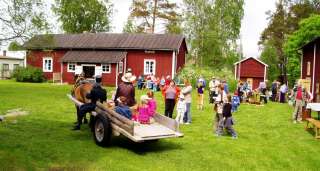
The Korsnäs Local Museum premises today include the old hired hand’s cottage, the windmill, the forge, three rooms in the loft building, and the parish granary across the road. The beautiful museum yard serves as a place for festivities, demonstrations of handicrafts, and games.
The Korsnäs sweater, a special kind of sweater made and used in Korsnäs during the late 19th and early 20th centuries, has experienced quite a renaissance in the last few decades. It is a unique piece of clothing, mainly because it has both crocheted and knitted sections in bright colors. The museum’s collection is comprised of several Korsnäs sweaters of earlier and later origin. The oldest is from 1864.+358 50 351 9488
